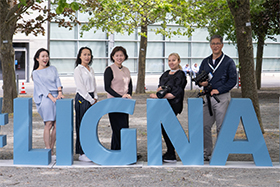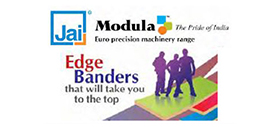At 100, Festool powers new solutions

Entering the 21st century, Festool continued to push boundaries with the Domino wood joining system (L) and the cordless CSC SYS 50 table saw (R).
Festool, a leader in precision-engineered and durable power tool solutions, is celebrating 100 years of innovation in tools for professional tradespeople this year. Its user-oriented, robust and long-lasting line of power tools have evolved from the first portable chainsaw in the early 1930s to the ground-breaking ExoActive exoskeleton in 2024.
Festool’s journey began in Germany in 1925 when Albert Fezer and Gottlieb Stoll founded a company to repair stationary wood processing machines. The duo quickly realised their expertise could go beyond repairs: they could build better machines! This dedication to quality and innovation led to ground-breaking products that continue to shape the industry.
First introduced as Fezer & Stoll, the company became Festo, and its power tool division later evolved into Festool. From the start, the company has focused on providing tradespeople with high-quality tools to make work better and more efficient.
Through close collaboration with trade professionals, the company has consistently developed tools and systems tailored to the specific needs of the trade. It invites professionals to join them for the next 100 years of innovation!
Customer demands
Following the launch of its breakthrough portable chainsaw in 1927, Festool introduced the SB126, the first portable circular saw for carpenters in 1930, setting the stage for decades of innovation.
In 1966, Festool revolutionised sanding with the introduction of the first orbital sander, replacing tedious and time-consuming work with a more efficient solution. This game-changing tool led to the development of the world’s first dust extraction system to prioritize the health and safety of tradespeople and their customers.
The 1960s also brought forth the introduction of Festool’s guide rail, now an essential tool in the trades worldwide.
The company continued to establish its name in the industry with pioneering products like the Rotex in 1979, the first geared random orbit sander in the world – it combined coarse sanding, fine sanding and polishing in a single tool.
In 1993, the company launched the legendary Systainer, a versatile storage, organisation and transportation system that remains an industry standard and is now available in 185 different versions.
Entering the 2000s, Festool continued to push boundaries with products like the Domino wood joining system (2006), the Planex LHS 225 drywall sander with adjustable vacuum suction (2008), and the cordless CSC SYS 50 table saw in Systainer Format (2023).
Most recently, the ExoActive exoskeleton showcases the company’s commitment to ergonomic advancements; as Festool’s customers’ needs and wants evolved, so did the brand’s product portfolio.

Festool made its debut with its portable chainsaw in 1927 (L) and the portable circular saw (R).
Occupational safety
Beyond its power tool solutions, Festool has dedicated itself to ensuring occupational health and safety. The company has introduced innovative technologies like KickbackStop and the vibration control system to enhance safety for tradespeople.
By combining precision engineering and a drive for innovation, Festool continues to redefine what is possible for tradespeople.
Barbara Austel, Chair of the Festool supervisory board and grand-daughter of founder Gottlieb Stoll says: “Primarily, we want to use the occasion of our anniversary to say thank you. Thank you to our employees and to the many customers who have supported us through the years,” she said.
Festool will also celebrate its anniversary throughout 2025 with limited-edition releases and exclusive versions of select products that have played an important role in the company history. For more information, visit: www.festoolusa.com/festool100.

Rotex (L) was the world’s first geared random orbit sander in the world. The ExoActive exoskeleton (R) showcases the company’s commitment to ergonomic advancements.
Comments

- European symposium highlights formaldehyde emission limits
- Egger adopts holistic approach to waste management
- Taiwan’s Woodworking Machinery Industry Captivates Global Media on Opening Day of LIGNA 2025
- Coming of age of sustainability
- Intelligent packing line, sander from Woodtech
- Ornare introduces 5 new leather decors
- Richfill Edge Coat offers safer plywood finishing
- Jai’s Optimus range stays ahead of the curve
- Merino’s Acrolam sets new benchmarks in elegance
- Pytha 3D-CAD: where precision meets production
- Raucarp edge bands: simple, affordable
- Greenlam scores a 1st: High Quality Product Award
- Häfele turns space solutions provider
- Hettich bets on intelligent motion for evolving interiors
- Praveedh taking desi innovation to the global stage
- Turakhia shows off its Natural Veneers range
- Egger continues to ‘inspire, create, grow’
- Blum turns heads with new drawer, hinge systems
- FSC benchmarking responsible forestry
- At 100, Festool powers new solutions
- Door manufacturing on cusp of transformation
- AI-powered crib sings a universal lullaby
- In Full Bloom: Top brass at Blum takes a shot at burgeoning India market
- Elegant mathematics is bending the future of design
- Wood fibres weave new textile yarn
- Rolls-Royce icon: ‘most intricate woodwork ever’
- Felder’s long-term view to achieving excellence
- Tech in the future of furniture manufacturing
- Exports from India on horizon: Juergen Koeppel, CEO, Leitz Tooling
- Pfleiderer adds value with digital ‘structure finder’
- Australian architects design for KEEPsakes
- Jump shot! Crafting the ultimate pool table
- Apple adopts CLT to cut building emissions
- Sustainable design at Hotel Hábitat 2025
- Vecoplan tailors waste wood processing at Schaffer Holz
- Dealer engagement goes digital
- How to refinish wood decks like a pro
- IWMMTA makes strong beginning in the East
- Feria Hábitat weathers unusual Spanish storm
- Interzum Guangzhou 2026: materials defining the future
- Forum Italy: Beyond Furniture, Towards the Future
- CIFF Shanghai: hub of design, innovation
- Interzum Jakarta debuts with strong connect
- DAIC to showcase Kerala’s prowess this December
- Events Calendar: Industry fairs to visit


































